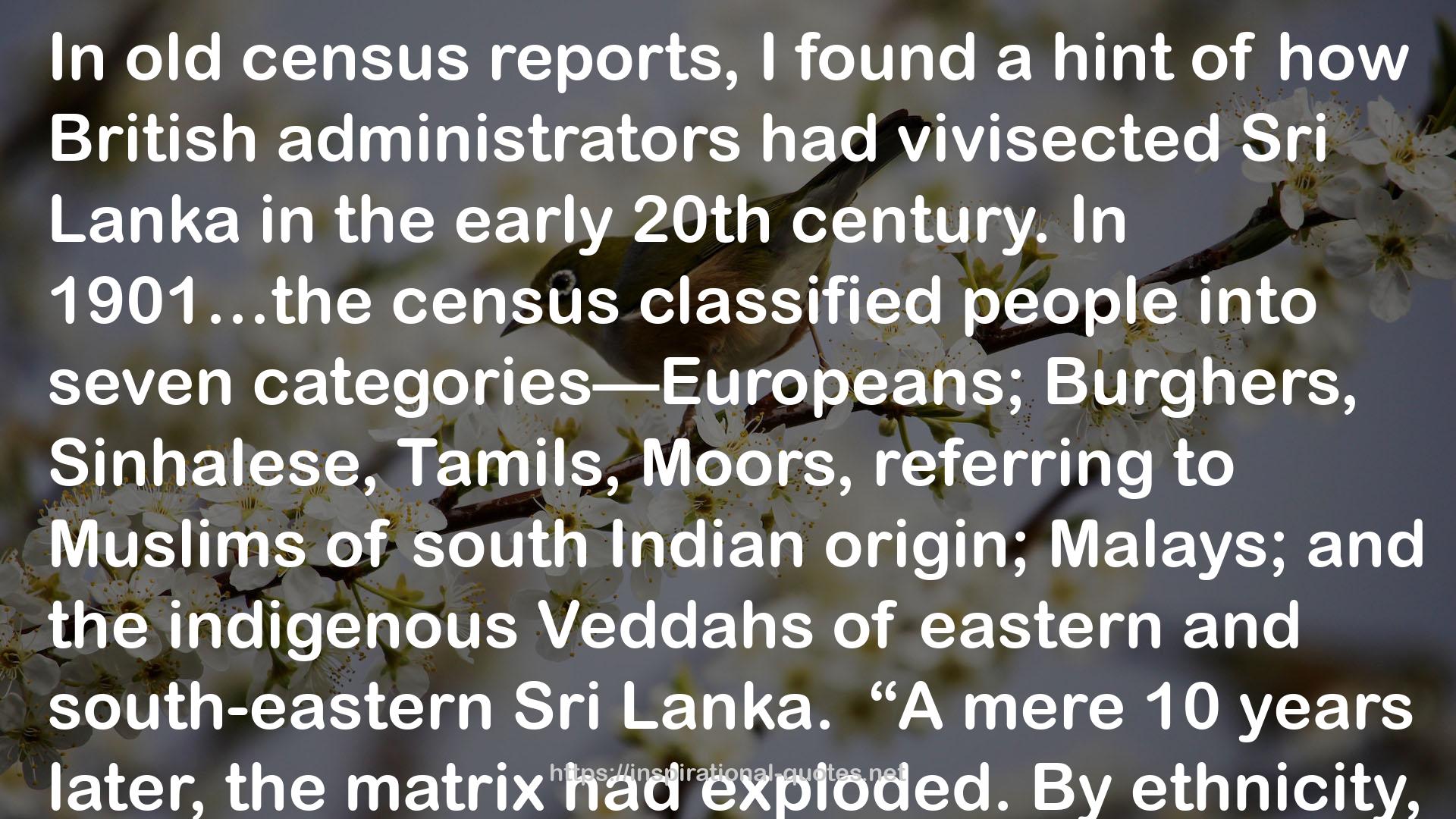" In old census reports, I found a hint of how British administrators had vivisected Sri Lanka in the early 20th century. In 1901…the census classified people into seven categories—Europeans; Burghers, Sinhalese, Tamils, Moors, referring to Muslims of south Indian origin; Malays; and the indigenous Veddahs of eastern and south-eastern Sri Lanka.
“A mere 10 years later, the matrix had exploded. By ethnicity, a Sri Lankan in 1911 could identify himself in any one of 10 ways, and then again in any one of 11 ways by religious denomination—a multiplicative tumult of identity. Slender distinctions were now officially recognized. A Sinhalese could be a low-country Sinhalese or a Kandyan Sinhalese; a Tamil could be a Ceylon Tamil or an Indian Tamil, depending on how recently his family had settled in Sri Lanka; a Christian could be a Roman Catholic, Presbyterian, Wesleyan, Methodist, Baptist, Congregationalist, or a Salvationist, or he could belong to the Church of England or ‘Other Sects.’ Assembling legislatures based on such muddled ethnic loyalties helped the British by disrupting solidarity and nationalism because, as Governor William Manning once wrote to his secretary of state in London, ‘no single community can impose its will upon the other communities. "
― Samanth Subramanian , This Divided Island: Stories from the Sri Lankan War
